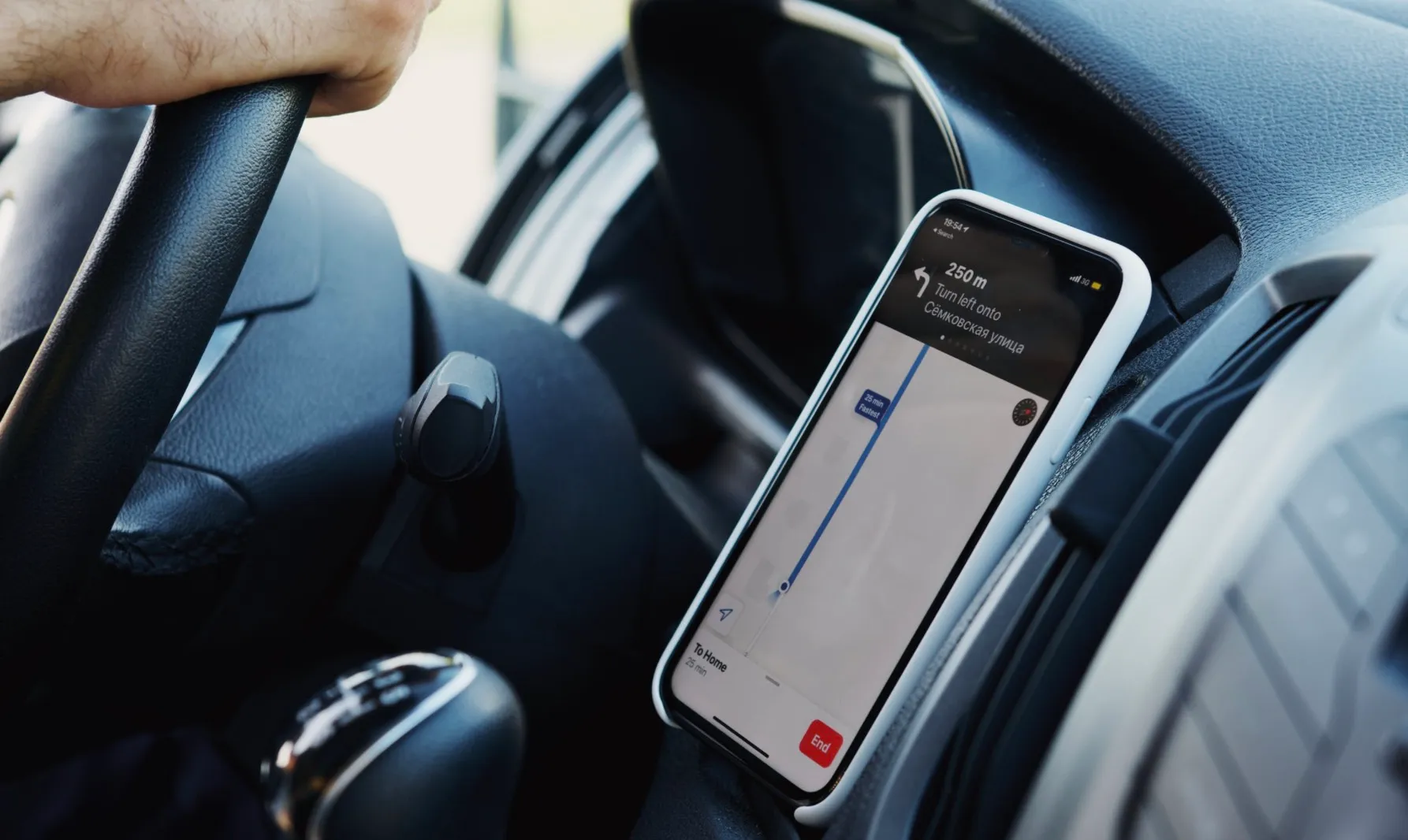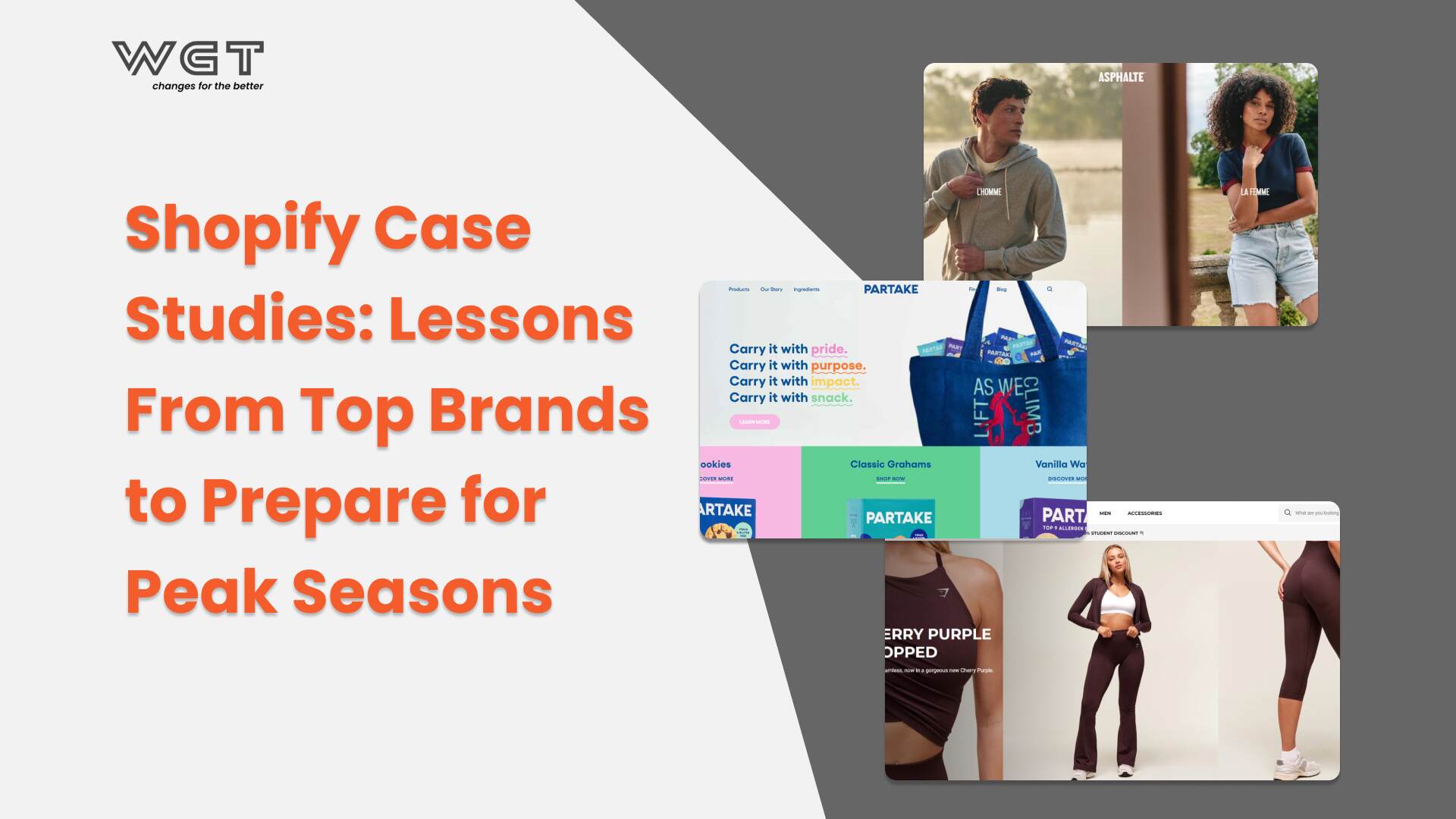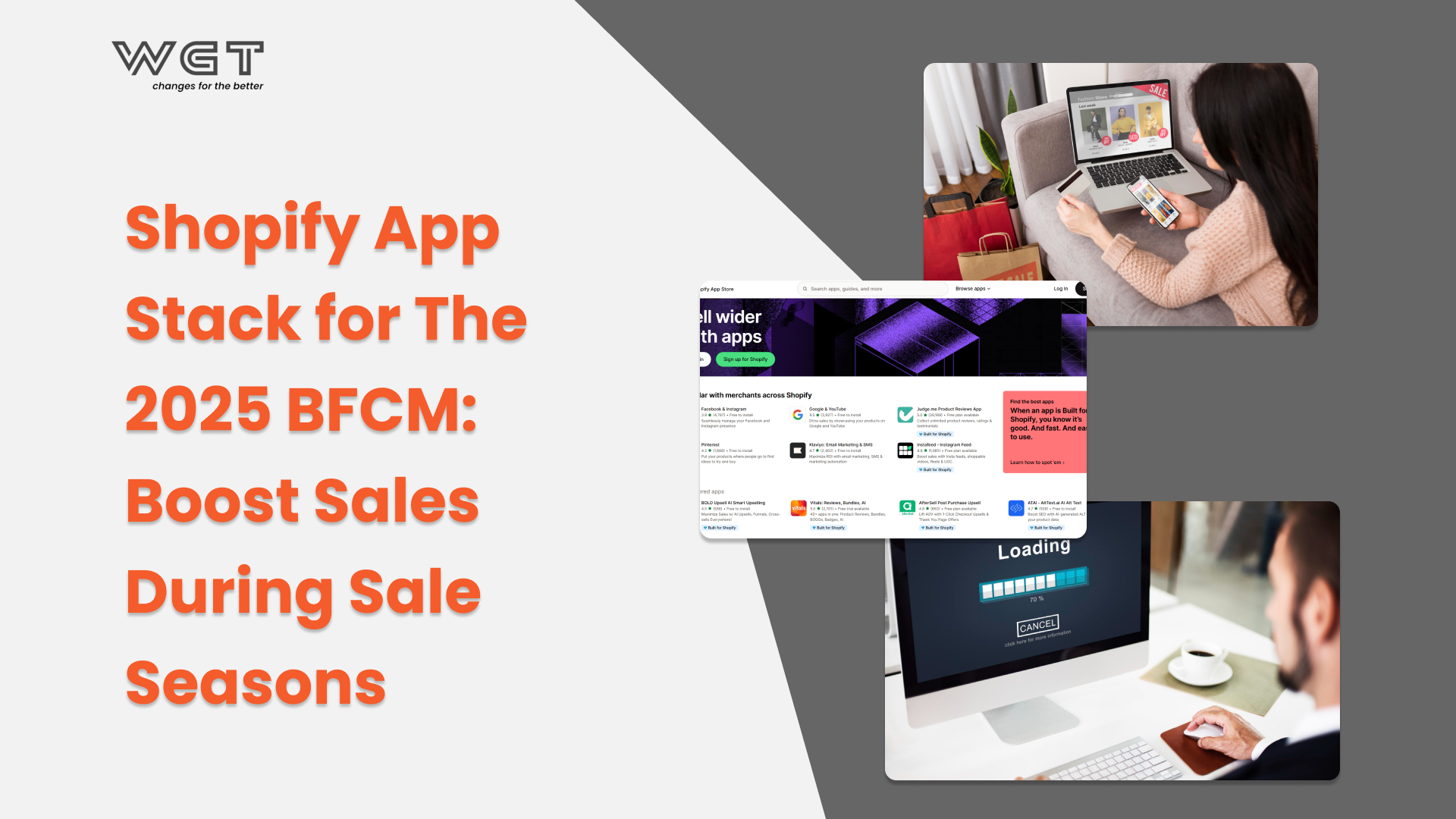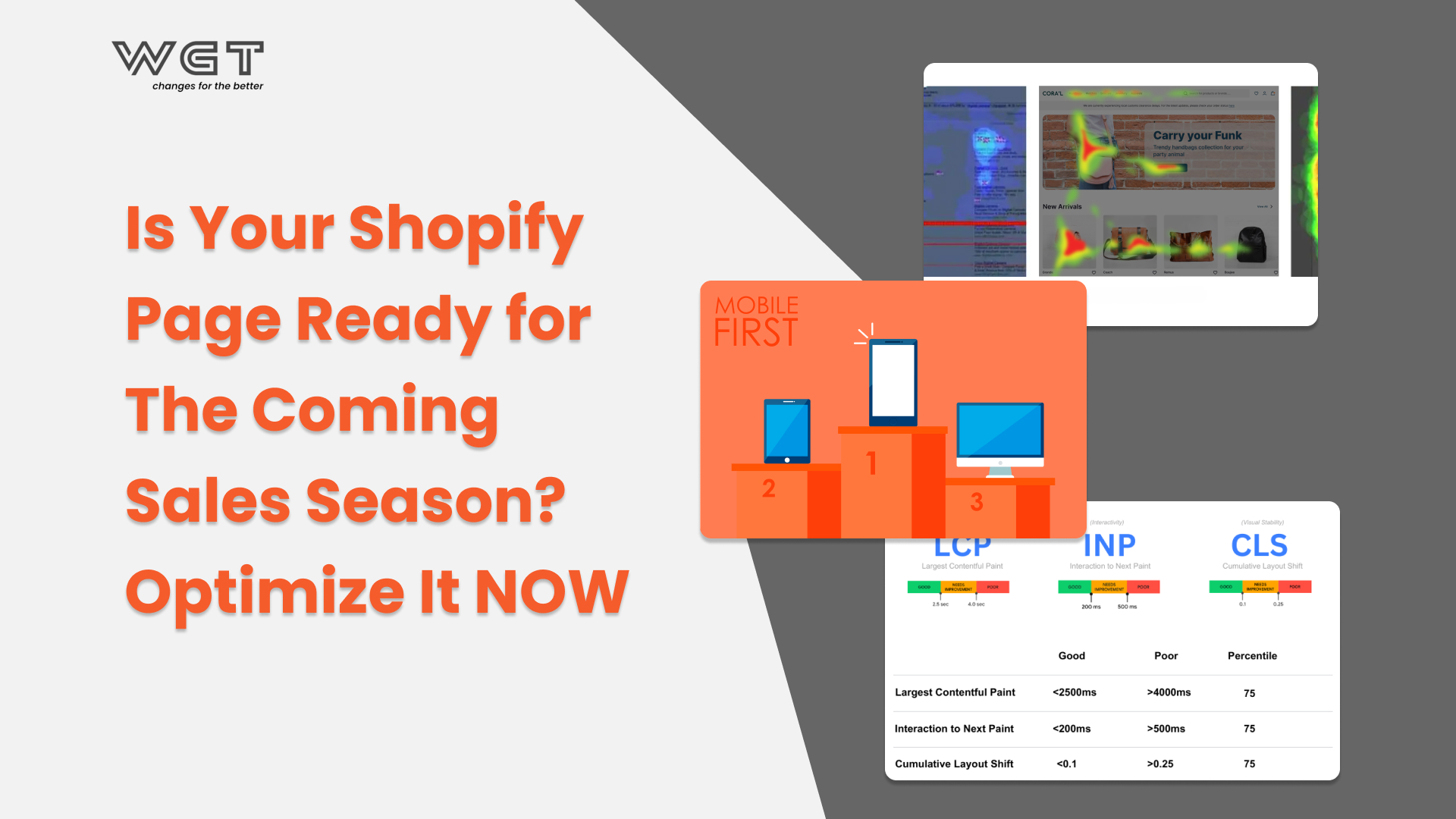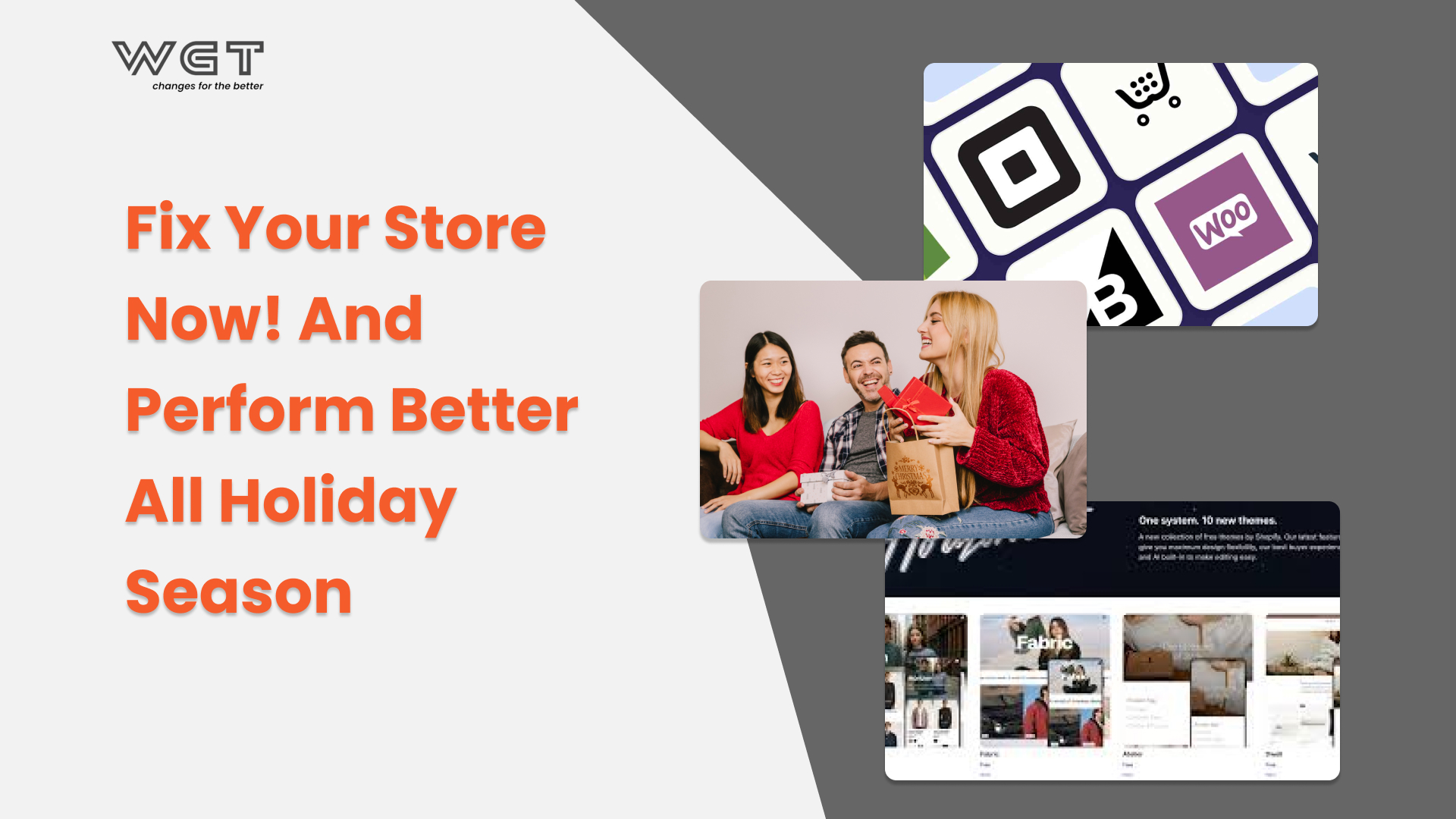Cross-border eCommerce is redefining how brands grow. As shoppers move across markets with a single tap, the real advantage in 2025 is not reach but readiness. Stores that feel local on every visit win more often, especially when peak-season demand compresses decision time and exposes weak systems.
This paper clarifies what it means to be global-ready. It focuses on the five dimensions that determine performance at scale: platform and infrastructure, localization and customer experience, payments and compliance, fulfillment and logistics, marketing and data intelligence. You will see how real brands apply these principles through cases such as Delugs, July, Allbirds, HiSmile, Gymshark, and Positive Grid, plus quick actions that can be implemented in weeks.
The aim is practical. You will learn where to start, how to prioritize for peak season, and which metrics prove progress.
The New Geography of eCommerce
Geography no longer limits commerce, technology does.
Modern buyers expect local trust, familiar payment methods, and fast delivery wherever they shop.
Cross-border eCommerce has evolved from an opportunity into the default mode of retail growth. Global online sales are expected to reach 7.9 trillion USD by 2025, driven by Asia and other emerging markets where digital infrastructure and purchasing power are accelerating together.
As international demand grows, many brands still rely on domestic-only systems: rigid checkout flows, limited payment gateways, or logistics that stop at the border. These aren’t minor technical issues; they are structural gaps that quietly erode conversion and trust during the most profitable months of the year.
The next competitive advantage lies not in expansion itself but in operational readiness – the ability to adapt across regions without friction.
Global growth now requires stores to behave like ecosystems: every system, experience, and data flow must respond as one.

Cross-Border eCommerce Readiness: The Five Dimensions
Readiness is not a single project or platform upgrade. It’s a layered capability built across technology, experience, and intelligence.
The following five dimensions define whether a brand can scale internationally with speed, stability, and control and whether it can turn cross-border complexity into performance at scale.
Platform and Infrastructure Readiness
A global store begins with a solid technical foundation. Your platform architecture decides how fast pages load, how easily new markets are launched, and how reliably transactions flow under heavy traffic. Without scalability and stability, every other readiness effort hits a ceiling.
Key priorities for 2025
- Unified architecture: Manage multiple regions from one backend. Shopify Markets enables centralized taxes, pricing, and language management.
- Performance optimization: Test from different regions using Lighthouse or GTMetrix to reveal latency.
- Search visibility: Configure hreflang and canonical tags correctly for international SEO.
- Security and reliability: Maintain global SSL coverage and uptime monitoring via a CDN.
Case Insight – Delugs: Scaling Craftsmanship with Shopify Markets
Delugs is a Singapore-based maker of handcrafted leather watch straps serving collectors worldwide. Its meticulous production drew global attention, but the company’s digital systems lagged behind its ambition.
Challenges
Like many fast-growing niche brands, Delugs relied on manual fulfillment and ad-hoc tax handling. International customers saw inconsistent pricing, hidden duties, and unclear sizing guides. Wholesale partners still ordered through improvised discount codes: a fragile, unsustainable workflow.
Actions / Solutions
- Migrated to Shopify Plus and activated Shopify Markets for centralized control of currency, duties, and tax by region.
- Created a Watch Finder feature using metaobjects to match strap sizes with watch models.
- Built a dedicated B2B portal on Shopify Plus, separating wholesale pricing and invoicing from B2C.
Results
- +58 % YoY checkout conversion
- +14 % returning customers
- +13 % total order volume
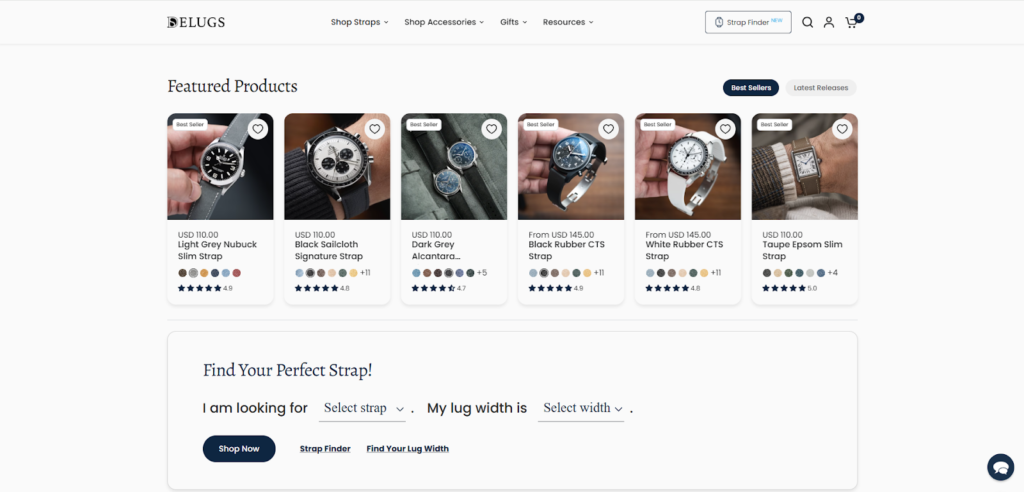
Key Insight
Cross-border growth dies when internal complexity scales faster than the platform. Delugs’s success wasn’t just about adopting Shopify Plus; it was about engineering simplicity at scale. By standardizing taxes, pricing, and currencies under one admin, they turned what used to be days of manual updates into minutes of configuration. For many niche brands, this shift from manual operation to automated governance is what separates sustainable growth from burnout. True readiness isn’t adding more systems, it’s consolidating the right ones.
How this insight translates to your store:
- Consolidate all regional pricing, duties, and currencies within Shopify Markets or a centralized system.
- Replace manual workflows with automations for tax and fulfillment updates.
- Audit where repetitive operations still depend on human input. That’s your first scalability blocker.
Localization and Customer Experience Readiness
Localization is not translation, it is recognition. Buyers want a store that feels built for them: native language, familiar visuals, clear pricing, and trustworthy communication.
What effective localization includes
- Language accuracy: Review automated translation with native editors.
- Currency transparency: Show final landed prices without hidden fees.
- Cultural design fit: Adapt layout and imagery to regional preferences.
- Local trust cues: Use country-specific testimonials and recognizable payment icons.
Case Insight – K18 Hair: When Localization Means More Than Translation
K18 Hair is a U.S. biotech hair-care company famous for its patented peptide repair technology. When it entered Japan and South Korea in 2023, traffic surged but conversions flatlined.
Challenges
Asian shoppers abandoned early due to untranslated ingredient lists, Western-centric visuals, and lack of localized shipping details which are the same frictions that block many U.S. brands from converting APAC traffic.
Actions / Solutions
- Rebuilt each Shopify storefront with localized copy, measurements, and currency.
- Replaced visuals with regional photography and adjusted color palette for local aesthetics.
Added FAQ pages addressing import duties, delivery times, and product safety regulations.
Results
- +34 % session duration
- +28 % add-to-cart rate
- Return visits doubled in Japan within two months
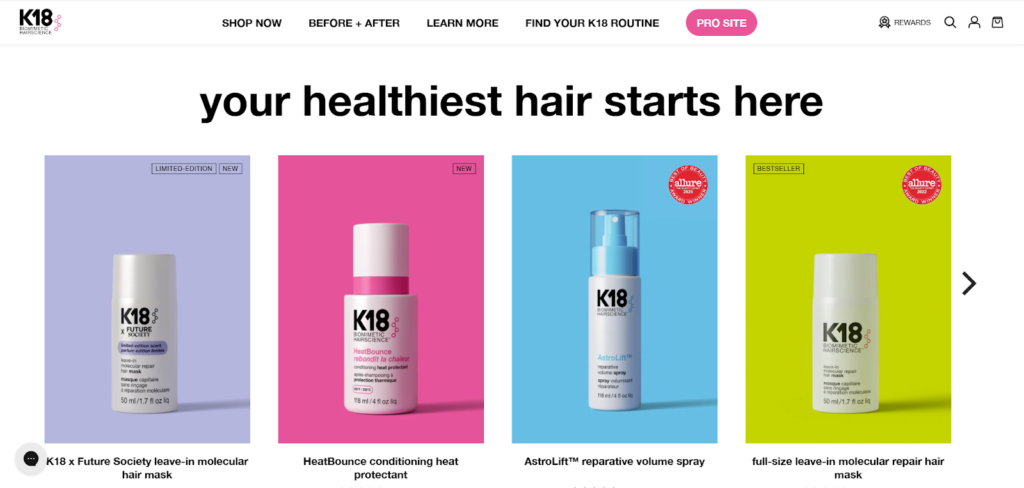
Key Insight
Localization is a trust exercise. K18 proved that conversion happens when context feels personal, not when words are merely translated. The brand didn’t localize to look global; it localized to feel familiar. By redesigning their product pages, imagery, and messaging to reflect how Asian shoppers research and decide, K18 turned linguistic accuracy into emotional accuracy. In global commerce, authentic familiarity always outperforms fluent translation.
How this insight translates to your store:
- Review your site from the perspective of a new market (not just the language, but tone, visuals, and trust signals).
- Localize key conversion pages (Homepage, PDP, Checkout) with native copywriters, not just translation tools.
- Treat cultural fit as part of CRO: test how regional imagery and UX patterns impact session duration and cart rate.
Payment and Compliance Readiness
Checkout is the final trust test.Even a minor mismatch between expectation and reality like missing wallets, surprise taxes, or unsupported currencies can end a sale instantly.
Essentials of payment readiness
- Multi-currency checkout: Activate via Shopify Payments or gateways like WorldFirst or Payoneer.
- Local payment options: Offer Alipay, WeChat Pay, PayPal, Apple Pay, or local cash methods.
- Transparent taxation: Display duties / VAT before checkout.
- Privacy compliance: Align refund and data policies with GDPR, PDPA, or CCPA.
Case Insight – Gymshark: Payment Familiarity Converts Better Than Discounts
Gymshark, a U.K. fitness giant, built a massive community online but stumbled as it expanded into Southeast Asia.
Challenges
Despite strong marketing, one-third of regional checkouts failed. Local shoppers distrusted unfamiliar gateways and saw prices that didn’t match their currency or included surprise duties – a common friction for Western brands entering new markets.
Actions / Solutions
- Enabled Shopify Payments with automatic currency conversion.
- Integrated PayPal, GCash, and Apple Pay to mirror local payment habits.
- Displayed taxes and shipping fees transparently on product pages.
Results
- +25 % checkout-conversion lift in one month
- -40 % checkout time
- +30 % customer-satisfaction improvement

Key Insight
Payment is not the end of the funnel. It is the moment of proof. Gymshark’s turnaround in Southeast Asia shows that familiarity builds trust faster than any promotion. When shoppers recognize their preferred wallet, they don’t just pay; they relax. Checkout optimization is often treated as backend work, yet it’s the frontline of conversion psychology. Consistency between regional pricing, currency, and local gateways communicates legitimacy before a single word of copy does.
How this insight translates to your store:
- Map the top three local payment options per region and integrate at least one of them before your next campaign.
- Show currency and total cost clarity early in the checkout flow to prevent surprise drop-offs.
- Test mobile checkout UX on regional devices; small friction on wallet authentication can quietly cost thousands in lost revenue.
Fulfillment and Logistics Readiness
Marketing promises mean little if delivery fails. Cross-border logistics translate operational readiness into customer loyalty.
Key areas to assess
- Inventory distribution: Keep stock near demand hubs.
- System integration: Connect Shopify with ERP/WMS such as Odoo, Shippo, or Boxme.
- Carrier coordination: Mix global carriers (DHL, FedEx) with local partners.
- Returns management: Simplify and communicate clearly.
Case Insight – July Luggage: Building Global Reach in Record Time
July, an Australian luggage brand, needed to capitalize on post-pandemic travel recovery by launching fast into the U.S. and Europe. Its legacy setup caused long delivery times and manual promotion handling. Launching new regions took weeks – a fatal delay during peak travel demand.
Actions / Solutions
- Migrated to Shopify Plus, implemented Shopify Scripts for flexible bundles and discounts.
- Integrated Shopify POS for unified inventory across retail + online.
- Partnered with DHL Express and regional 3PL hubs (Singapore & Los Angeles) to shorten last-mile routes.
Results
- +640 % YoY revenue growth
- 50 % of sales from the U.S. within one month
- 40 % faster global delivery times

Key Insight
Global readiness favors fast execution over perfect planning. July’s expansion proved that agility not scale, defines readiness. Instead of reinventing its entire backend, the team leveraged automation, pre-built Shopify features, and trusted 3PL partners to go live in weeks. The result wasn’t just faster delivery; it was faster learning. By shipping sooner, July could measure real demand and reinvest strategically – a blueprint for modern expansion where speed compounds insight.
How this insight translates to your store:
- Use real delivery data not assumptions to decide where to place inventory or open the next warehouse.
- Automate inventory sync between Shopify, POS, and logistics partners to cut manual delays during high-volume periods.
- Treat every market launch as a logistics test first; faster fulfillment builds customer trust faster than any promotion.
Case Insight – Allbirds: Turning Retail Inventory into Online Opportunity
Allbirds, the sustainable footwear brand, faced excess store stock while online shoppers met “Sold Out” notices.
Challenges
Separate retail / eCommerce inventories led to waste, markdowns, and disappointed global customers – a widespread issue for omnichannel retailers.
Actions / Solutions
- Activated Ship-from-Store using Shopify POS and custom APIs.
- Allocated online orders to nearby stores for fulfillment.
- Trained store teams as micro-fulfillment centers during campaigns.
Results
- Reduced online stockouts and returns
- Lowered reverse-logistics costs
- Improved delivery speed & customer satisfaction

Key Insight
The new advantage in retail is fluid inventory, not static stock. Allbirds broke the traditional wall between eCommerce and stores transforming excess retail capacity into a competitive edge. By using ship-from-store as a fulfillment strategy, it unlocked both faster delivery and leaner operations. For omnichannel merchants, this is a key mindset shift: every location is a node in the delivery network, not a silo. Inventory agility, when combined with unified data, turns physical retail into a strategic asset for global eCommerce.
How this insight translates to your store:
- Enable ship-from-store or local pickup options through Shopify POS to shorten delivery routes.
- Sync inventory systems across online and offline as one source of truth reduces both delays and markdowns.
- View each retail location as a fulfillment node and measure its contribution to online sales velocity.
Marketing and Data Intelligence Readiness
You can’t improve what you can’t measure. Data readiness ensures every campaign aligns with regional behavior and actual ROI.
Core components
- Regional analytics: Track performance by country.
- Localized CRM segmentation: Adjust automation to local hours / holidays.
- Attribution accuracy: Tie revenue to correct market and currency.
- Personalization: Use cultural and behavioral data for relevance.
Case Insight – HiSmile: Data-Driven Personalization Across Regions
HiSmile, Australia’s leading oral-care D2C brand, operated six Shopify Plus stores but lacked a unified view of its global customers.
Challenges
Each region ran its own CRM, producing duplicate campaigns and conflicting time-zone scheduling. Messages overlapped and compliance exposure grew – a pain shared by many multi-store merchants.
Actions / Solutions
- Integrated all Shopify Plus stores with Klaviyo, centralizing segmentation and automation.
- Created localized pre-purchase / post-purchase flows per region and language.
- Implemented GDPR-compliant consent management.
Results
- +43 % YoY revenue from automated flows
- +76 % click-through increase
- -19 % unsubscribe rate
- 8.2 million unified customer profiles

Key Insight
Customer data is not valuable until it becomes operationally usable. HiSmile’s multi-region setup exposed a common scaling pain: fragmented CRMs mean fragmented conversations. By unifying all Shopify Plus stores into one Klaviyo ecosystem, they built what most brands still lack: a global customer brain.
This allowed them to personalize flows by timezone, language, and purchase cycle at once.
Data readiness, in essence, is the invisible engine of localization. When your data understands your buyer before you do, global personalization becomes predictable.
How this insight translates to your store:
- Consolidate CRM data across all markets into one segmentation system (Klaviyo, HubSpot, etc.).
- Align automation schedules with regional time zones and holidays.
- Use behavioral data (not just purchase data) to guide retargeting and product recommendation flows.
Case Insight – Positive Grid: Converting at Scale Through Checkout and Localization
Positive Grid, maker of the Spark smart guitar amp, sells to musicians worldwide.
Challenges
Its old custom platform couldn’t localize pricing or content fast enough and crashed under campaign traffic. Musicians abandoned checkout due to slow load times and confusing regional prices.
Maybe you want to read: Content Marketing for eCommerce Websites: Your Comprehensive Guide
Actions / Solutions
- Replatformed to Shopify Plus for stability and scalability.
- Launched six localized storefronts with automatic currency detection.
- Added Yotpo for reviews and loyalty, Bloomreach for personalization, and Shop Pay for one-click checkout.
Results
- 6× higher conversion rate
- Record holiday sales after migration
- Stable checkout under peak load
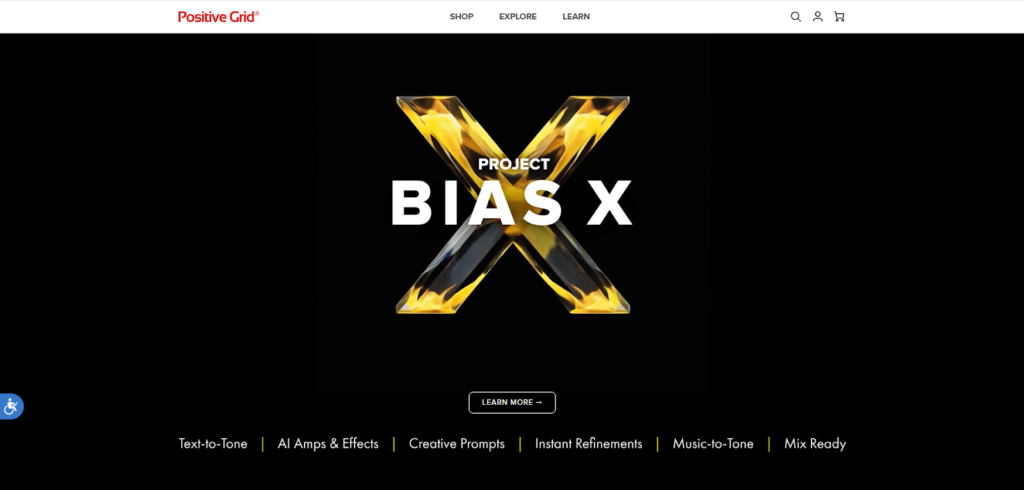
Key Insight
Technology readiness translates directly to conversion resilience. Positive Grid’s success came from fixing what most brands ignore: the invisible performance bottlenecks that quietly bleed ROI.
By rebuilding its checkout and storefront architecture for multi-region traffic, the brand achieved both reliability and speed.This shows the critical truth of peak-season commerce: a campaign is only as strong as the infrastructure that delivers it. Even a brilliant ad cannot convert if the page lags or the currency looks wrong.
How this insight translates to your store:
- Audit your site’s speed and checkout flow from different continents as latency often hides behind beautiful design.
- Replatform early if your system can’t scale beyond one regional store without breaking workflows.
- Treat technical stability as a marketing KPI: uptime and load speed are conversion metrics, not IT metrics.
The Operational Reality: What Can Be Done Before Peak Season
Global readiness often sounds like a large transformation project that requires months of planning and development. In practice, many of the foundations of cross border ecommerce can be improved within weeks. Technology has matured enough for brands to localize, integrate, and optimize faster than ever before.
Understanding the Real Timeline of Change
Most readiness improvements fall into three time horizons:
- Immediate (within 7 days). Configuration updates that do not require new systems. Examples include activating multi-currency, enabling local wallets, or improving CDN delivery for faster loading.
- Short term (within 14 to 30 days). Process changes or integrations that need coordination but little custom development. This includes setting up ERP or fulfillment connectors, translating key pages, or adding new shipping providers.
- Long term (beyond 30 days). Structural upgrades such as building a separate regional storefront, implementing headless commerce, or creating fully localized marketing campaigns.
For brands entering the final quarter of 2025, focusing on the first two horizons brings the fastest ROI. A well-chosen set of quick wins can raise international conversion rates by 10 to 25 percent even before the next campaign launches.
Prioritizing What to Fix First
Not every improvement has the same impact. The most effective approach is to prioritize by risk and visibility.
- Payment friction. A failed checkout equals a lost sale. Adding or updating payment gateways should come first.
- Page speed. Every second of delay cuts conversion by roughly 7 percent. Optimizing load time for overseas visitors often produces instant uplift.
- Localization of trust signals. Updating currency display, delivery messages, and return policies helps retain visitors who already intend to buy.
- Logistics coordination. Ensuring fulfillment systems are connected reduces order delays and improves post-purchase satisfaction.
By targeting these four areas first, brands can stabilize their operations and avoid the most common points of failure during peak traffic.
Using Tools That Shorten Deployment Cycles
Modern commerce tools now minimize technical barriers. Many cross border ecommerce solutions are built to deploy quickly through configuration, not code.
- Shopify Markets allows configuration of multiple currencies and languages from a single admin.
- WorldFirst and Payoneer simplify international payments and currency settlements.
- Odoo, Shippo and Boxme help connect Shopify stores to global warehouses and delivery providers.
- Klaviyo and HubSpot automate region-based campaigns with built-in segmentation.
- Joy Loyalty empowers Shopify brands to transform every customer interaction into lasting loyalty with data-driven retention strategies.
Instead of reinventing infrastructure, brands can assemble a modular ecosystem. This approach aligns with how successful eCommerce operations already function in mature markets: through scalable integrations that evolve as business grows.
Common Mistakes That Delay Readiness
While technology speeds up deployment, the human process often slows it down. Many brands fall into predictable traps that can be avoided with simple planning.
- Starting with marketing before infrastructure. Ads bring traffic faster than your system can handle. Always test your checkout and payment flows first.
- Underestimating translation effort. Automated translation works for navigation but not for persuasion. Product pages need review by native speakers to preserve meaning.
- Ignoring local regulations. Privacy and tax compliance vary by region. Missing legal details can lead to blocked payments or penalties.
- Treating fulfillment as an afterthought. Logistics complexity multiplies after the first international sale. Early integration with partners prevents chaos later.
Each of these issues can be addressed proactively in the weeks before peak season. Even partial readiness is better than none. The difference between a store that fails under pressure and one that scales smoothly is often a few deliberate fixes made early.
Measuring Cross Border eCommerce Readiness Progress
Operational readiness should be measurable, not just theoretical. A simple framework is to track four metrics weekly during preparation:
- Page performance. Average load time across top three international markets.
- Checkout success rate. Percentage of transactions completed without error by region.
- Fulfillment accuracy. Share of orders shipped within the promised delivery window.
- Customer satisfaction. Review ratings or support response times for cross-border buyers.
Monitoring these indicators helps teams stay focused on impact, not effort. Improvement in even two of these metrics signals that readiness measures are taking effect.
Acting Before Demand Arrives
Readiness loses value if it starts after the traffic spike. In 2025, global shoppers begin their peak season search as early as October. By November, competition for attention and ad inventory is already at its highest. Every day of preparation in advance can make a measurable difference.
Many readiness layers take less time than expected. Setting up local wallets can be completed in two days. Translating checkout pages takes less than a week. Configuring cross border logistics through an integrated fulfillment provider can be done within ten days. The most important factor is to start before urgency turns into crisis.
Cross border ecommerce is not just about being available globally. It is about being operationally ready to deliver at global speed.
The Cross Border eCommerce Solutions Checklist for Peak Season
A readiness plan is only effective when it becomes measurable. While each brand operates differently, the fundamentals of cross border eCommerce remain consistent. This checklist is designed to help business owners and operations managers evaluate how prepared their online store truly is before the next wave of international traffic arrives.
Each item represents one of the five readiness dimensions discussed earlier.
A store that can confidently answer “yes” to at least eight of the ten questions below is ready to compete globally during the upcoming peak season.
Platform and Infrastructure
☐ Have you tested your website’s speed from at least three different regions?
Global visitors often experience slower loading times than local customers.
Using Google Lighthouse or GTMetrix from various IP locations helps detect weak points.
☐ Does your CDN or hosting solution provide edge delivery for multiple continents?
Content delivery networks improve latency and maintain performance consistency across countries.
Localization and User Experience
☐ Are product descriptions and key pages professionally localized instead of machine-translated?
Authentic translation improves credibility and clarity for regional audiences.
☐ Does your store display prices and shipping information in the visitor’s local currency and format?
Transparent pricing in local currency increases checkout completion and reduces confusion.
Payment and Compliance
☐ Can your checkout process accept at least one local payment method for each target market?
Adding wallets such as PayPal, Alipay, or Apple Pay strengthens consumer trust.
☐ Are taxes, duties, and refund policies visible before checkout begins?
Displaying the full landed cost builds transparency and avoids abandoned carts.
Fulfillment and Logistics
☐ Have you integrated your store with an ERP, WMS, or 3PL provider for automated order routing?
Seamless connections reduce manual errors and shorten fulfillment times.
☐ Do you offer international tracking and realistic delivery timeframes?
Shoppers are more likely to complete purchases when they see predictable logistics.
Marketing and Data Intelligence
☐ Are your analytics segmented by market or region?
Data separation ensures that performance reports reflect true audience behavior.
☐ Have you adjusted automation and campaign timing for different time zones?
Email and ad scheduling aligned with local hours can significantly improve engagement rates.
Scoring and Interpretation
- 8–10 “Yes” answers: Your store is cross border ready. You can confidently scale traffic during peak season with minimal risk.
- 5–7 “Yes” answers: The foundation is stable but still needs optimization. Prioritize payment trust, logistics, and data analytics before launching major campaigns.
- Below 5 “Yes” answers: Core systems are not ready. Focus on infrastructure and fulfillment first to avoid high cart abandonment and post-sale issues.
This checklist can also serve as a communication tool across departments. Marketing, operations, and development teams often view readiness from different angles. Using a shared framework helps unify their priorities before the most demanding period of the year.
Cross border ecommerce solutions are not about implementing every possible feature. They are about aligning the essentials that directly protect revenue when pressure peaks. Completing this readiness checklist ensures that your store can handle both the volume and complexity of international demand during the 2025 sale season.
The 2026 Outlook – The Next Phase of Global Growth
Cross-border commerce is entering a phase where readiness becomes adaptive. Systems will localize in real time, compliance will be automated by design, logistics will signal sustainability as a buying cue, and data will flow across a connected stack instead of isolated apps.
AI-driven localization moves from content to experience
What changes by 2026
AI will not only translate language. It will adjust tone, imagery, size charts, merchandising order, and even customer support macros per locale in near real time. Price windows and promotions can vary by willingness to pay, inventory, and local events. PDPs will render different benefits or claims based on regional regulations and search intent.
Why it matters
Speed of iteration becomes a competitive moat. Brands that can launch, test, and lock a localized variant in hours will convert better than those that need design and dev cycles for each change.
Risks to manage
Brand voice drift, over-personalization fatigue, and factual errors in regulated categories. Multilingual claims and ingredient lists need human governance. Accessibility can suffer if AI generates dense or inconsistent UI copy.
How to prepare now
- Model your content with metaobjects or CMS fields so variants can be swapped without theme edits.
- Define localization guardrails: approved tone, banned terms, claim templates, and visual style rules per region.
- Set a QA loop with native reviewers for high-risk pages such as PDP, returns, and checkout messages.
- Stand up an experimentation harness that measures uplift by locale, not only in aggregate.
KPIs to watch
Localized CTR, PDP dwell time per locale, add-to-cart rate by language, translation error rate, experiment turnaround time from brief to live.
Integrated tax and data compliance becomes a growth enabler
What changes by 2026
More countries will extend e-invoicing mandates, tighten data residency, and harden consent standards. Landed cost accuracy becomes table stakes. Refund, warranty, and chargeback rules will vary more visibly across regions.
Why it matters
Failed tax calculations and unclear duties remain top drivers of cross-border abandonment. Compliance friction erodes trust and injects manual work into finance and support teams.
Risks to manage
Fines, payment blocks, and reputational damage. Fragmented tax logic across apps creates reconciliation gaps. Data copies in multiple tools increase exposure to privacy violations.
How to prepare now
- Centralize landed cost logic and tax calculation through a single source of truth that feeds PDP and checkout.
- Map where customer data lives, who touches it, and how retention rules differ by region.
- Localize consent and preference centers. Keep a machine-readable audit trail for regulators.
- Create a quarterly regulatory watchlist and a sandbox to test new rules before rollout.
KPIs to watch
Share of orders with accurate landed cost displayed pre-checkout, tax error rate per market, time to refund by region, compliance ticket volume.
Sustainable fulfillment becomes a visible conversion lever
What changes by 2026
Shoppers expect to see delivery emissions estimates, recyclable packaging options, and consolidated returns at the point of choice. Carriers and 3PLs will expose sustainability data through APIs. Some markets will require packaging disclosures.
Why it matters
Sustainability is moving from brand story to purchase driver. For parity products, greener delivery can tip a decision. Transparent returns that minimize waste reduce cost and increase repeat rate.
Risks to manage
Greenwashing claims, cost inflation from inefficient packaging, and slow lanes disguised as eco options. A one-size policy across regions backfires because carrier networks differ widely.
How to prepare now
- Capture dimensional weight and packaging attributes in Shopify so rate shopping can pick the lowest impact option.
- Offer clear delivery choices: fastest, balanced, and low impact with reliable ETAs.
- Pilot regional return consolidation and refurbish flows for high-return categories.
Negotiate carrier SLAs that include emissions data and pickup density commitments.
KPIs to watch
Average delivery emissions estimate per order, delivery accuracy versus promise, return rate and reason codes by region, packaging cost per order, NPS for international deliveries.
Connected ecosystems replace point-solution sprawl
What changes by 2026
Stacks consolidate around a few core systems. The Shopify admin, OMS, ERP, WMS, and CRM exchange events continuously. Data freshness becomes minutes, not days. Composable is still relevant, but the bar shifts from “can it connect” to “can it govern and recover”.
Why it matters
A single source of operational truth reduces manual effort and prevents the classic cross-border failures: overselling, price mismatches, and slow reconciliation. Time to launch a new market becomes a configuration task, not a build project.
Risks to manage
Integration debt and brittle webhooks. Multiple masters for product, price, or customer data. Vendor lock-in without performance safeguards.
How to prepare now
- Decide and document master data ownership: who owns product, price, customer, and inventory.
- Move to event-based sync where possible and set clear retry logic and dead-letter queues.
- Establish an integration SLA dashboard that tracks latency and error rates across systems.
- Score vendors on openness, logs, and rollback capability, not only features.
KPIs to watch
Stock accuracy by location, price parity errors by market, data latency between systems, time to launch an additional region, engineering hours spent on ops incidents.
Social-native cross-border eCommerce becomes mainstream
What changes by 2026
On-platform checkout expands across markets. Creators sell across borders as easily as they post. TikTok Shop, Instagram Checkout, and YouTube Shopping will drive a larger share of first purchases in new regions. Performance blends with creator trust, while product feeds and localized UGC become core assets.
Why it matters
New-market acquisition costs fall when discovery and checkout live in the same surface. Social proof is inherently local, which improves conversion for unfamiliar brands.
Risks to manage
Fragmented stock and pricing between social and web catalogs. Rights and compliance for creator content vary by country. Returns and customer service must match the speed of on-platform purchases.
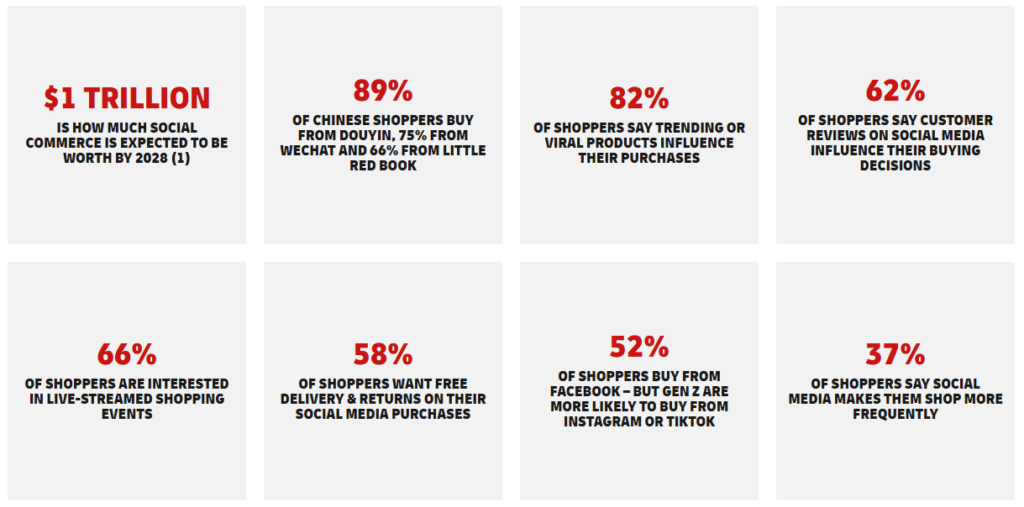
How to prepare now
- Localize product feeds and pricing per platform and market.
- Standardize creator contracts with regional usage rights, claims rules, and disclosure templates.
- Set up order ingestion, reconciliation, and return flows that treat social platforms as first-class channels.
- Tie social commerce buyers into your CRM immediately with post-purchase journeys by region.
KPIs to watch
Share of orders via on-platform checkout, creator ROAS by market, blended CAC for social-first regions, repeat rate of social-acquired customers, time to resolve social-origin tickets.
A 90-day readiness plan aligned to the 2026 outlook
1–2 Weeks: Foundation Setup
- Map content and data. Identify masters, sinks, and high-risk claims by region.
- Enable basic landed cost display on PDP and checkout for top two export markets.
Stand up global performance monitoring from three regions.
3–6 Weeks: Localization and Experience
- Convert key templates to structured content so AI localization can swap fields safely.
- Add one local wallet per target market and test tax and refund flows end to end.
- Pilot one sustainability option at checkout with clear copy and reliable ETA.
7–10 Weeks: Integration and Automation
- Connect OMS or WMS for live stock by location. Define ship-from-store rules where retail exists.
- Launch segmented CRM flows per region and time zone.
- Localize a small social-commerce catalog and reconcile orders automatically.
11–12 Weeks: Stress Test and Governance
- Run a peak-load rehearsal across checkout, taxes, and fulfillment.
- Freeze guardrails for AI copy and translation.
- Review KPIs and lock a quarterly governance cadence.
Outlook summary
By 2026, cross-border eCommerce readiness shifts from a checklist to a living system. Brands that structure content, centralize tax logic, expose trustworthy delivery choices, connect their apps through events, and treat social commerce as an equal channel will scale faster with fewer surprises. The winning pattern is simple. Make the system safe to change, then change it often where local buyers notice.
Final Thoughts
Cross-border eCommerce is no longer expansion, it’s expectation. The brands that lead 2026 will not be the biggest, but the most adaptable.
Readiness today means clear visibility across systems, markets, and data. Resilience tomorrow means acting on that visibility before disruption hits. Small, consistent improvements lead to faster checkouts, transparent logistics, localized trust compounding into lasting global growth.
The future belongs to brands that build for change, not control it.
Ready to strengthen your global foundation? Contact us to explore your next stage of cross-border readiness.


